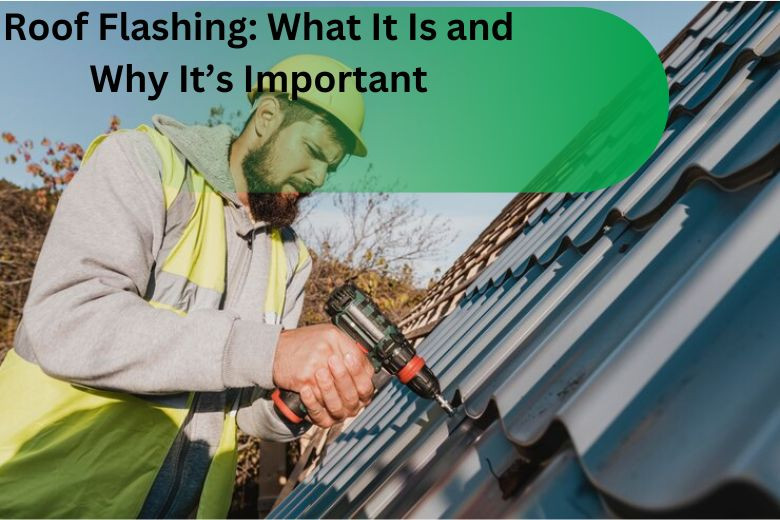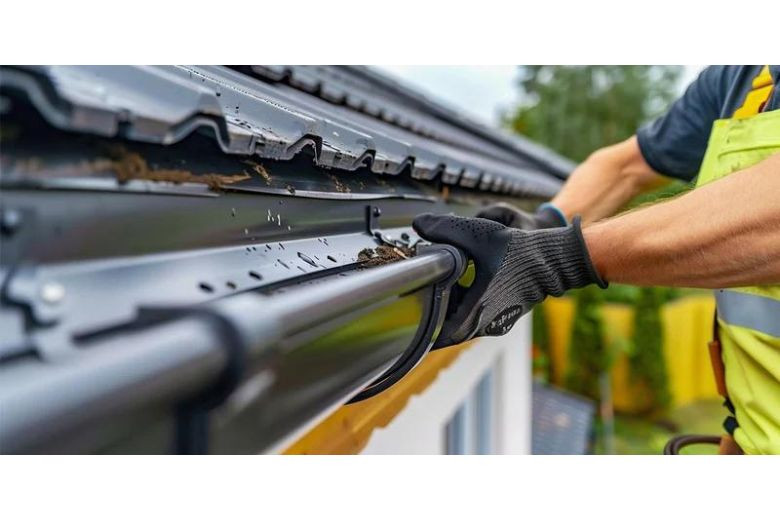Roof Flashing: What It Is and Why It’s Important
Posted on September 25, 2024 by Admin

As far as the integrity of your home is concerned, roof flashings are the most critical and ignored parts. Knowing a thing or two about roof flashing might save you from serious damage and very highly expensively repair-oriented work. Such information will familiarize you with what roof flashing is, its types, and why it is very important for the long-term life and health of your home.
What is Roof Flashing?
Basically, flashing on your roof is thin, impervious material mostly metal installed on important parts to prevent water from entering the structure. It is installed around chimneys, vents, and skylights at junctures of the roof with vertical walls and so forth. It works as a barrier, guiding the water out from these areas into the gutters and downspouts, hence saving your home from leakage and related damages.
Types of Roof Flashing
There are many types of roof flashing; all are custom-designed for the specific locations on the roof. Some of the main ones include:
1. Step Flashing:
Along the edges where the roof meets the wall, the step flashing consists of many pieces overlapping one another, directing water down the roof.
2. Chimney Flashing:
This has various types of flashing encircling the base of a chimney, tightly sealing it in; essentially, this includes step flashing and counter flashing.
3. Vent Pipe Flashing:
Particularly designed to fit around round roof penetrations, for instance, vent pipes, the seal is usually watertight around the pipe.
4. Valley Flashing:
Directed in the valleys where the two slopes meet, valley flashing takes the water off the roof and into the gutters.
5. Drip Edge Flashing:
It is installed along the edges of a roof to guide the water away from the fascia and into gutters, hence avoiding possible water damage to the roof deck and fascia.

Why Roof Flashing is Important
Leak Prevention:
For the greater part, roofing flashing keeps the water out of your house. Without appropriate flashing, water might penetrate your roof structure and cause decay, mold, and subsequent structural damage.
Durability of Roof:
Rightly installed roof flashing extends life expectancy by decreasing the chances of expensive repairs or replacing your roofing prematurely due to leakage and consequent water damage.
Improving Energy Efficiency:
A small but most important contribution of a roof flashing system relates to the energy efficiency of the home. Keeping water out saves insulation and other elements that help in thermal performance.
Protecting Home Value:
Proper flashing on your roof acts as a well-maintained piece, protecting the value of a home. Any buyer would be more confident in a home that has an overall appearance of being well cared for, and one that seems to have avoided water damage.
Ensuring Proper Installation
Now, this brings in the need for proper installation to ensure that roof flashing performs this critical role. It is highly recommended to have the flashing installed by a professional roofer who understands intricacies related to roofing systems. Otherwise, improper installation will cause gaps; improper sealing, and finally, infiltration of water.Not only this, but regular inspections and maintenance are necessary as well. Flashing can loosen, corrode, or even get damaged after some time whereby its effectiveness will be reduced. Therefore, periodic checks, specifically right after extreme weather, will allow problems to be detected at an early stage, thereby avoiding large-scale damages.
Conclusion
Roof flashing prevents water damage, elongates the life of your roof, and ensures energy efficiency; it also protects the value of your home. Knowing what the roof flashing does means you will be able to ensure its proper installation and maintenance, thus protecting your home from the elements and avoiding expensive repair works.
Also Read :
The Benefits of Roof Inspections Before Buying a Home
How to Choose the Best Roofing Contractor
The Importance of Sump Pumps in Flood-Prone Areas
How to Install a Tankless Water Heater: Pros and Cons
The Benefits of a Home Plumbing Maintenance Plan
Roof Safety Tips for Homeowners
The Impact of Algae and Moss on Your Roof
How to Deal with Roof Leaks During a Storm
How to Create an Electrical Maintenance Plan for Your Home
Faqs
-
1. What is roof flashing?
Generally, flashing on your roof is thin, impervious material, usually metal, installed at places considered critical to the structure from water infiltration, like around chimneys, vents, and at points where the roof meets the wall.
-
2. What are common types of roof flashing?
Commonly found types of flashing on a roof include step flashing, chimney flashing, vent pipe flashing, valley flashing, and drip edge flashing. Each of these types is designed for its specific place on the roof to effectively drain water away from vulnerable spots.
-
3. Why Is Roof Flashing Important?
Noticeably, the roof flashing avoids water damage to the structure, prolongs the life span of your roofs, improves energy efficiency by protecting insulation, and maintains the value of your home by avoiding structural damage.
-
4. How often should the roof flashing be inspected?
Inspection of the roof flashing should be done at least twice a year, preferably during spring and fall. Moreover, it has to be checked after severe weather to ascertain if the flashing has worn out or loosened.
-
5. Can I install roof flashing myself?
While minor repairs can be managed by you, installing roof flashing must be left to the professional roofer. Proper installation is incredibly essential for it to work best, keeping away water damage and protecting your home.
Recent Post
- Top Plumbing Service Providers in Arizona, USA
- Top 10 Electrician Service Providers in Alabama, USA
- Top 20 Roof Repair Service Providers in Alabama, USA
- The Role of Roof Insulation in Energy Efficiency: Tips and Tricks
- Understanding Roof Damage from Wildlife and How to Prevent It
- How to Choose the Best Roofing Contractor for Emergency Repairs
- Roofing Maintenance for Historic Homes: Preserving Architectural Integrity
- The Importance of Proper Attic Ventilation for Roof Health
- How to Identify and Prevent Roof Mold and Mildew
- The Best Practices for Removing Snow from Your Roof